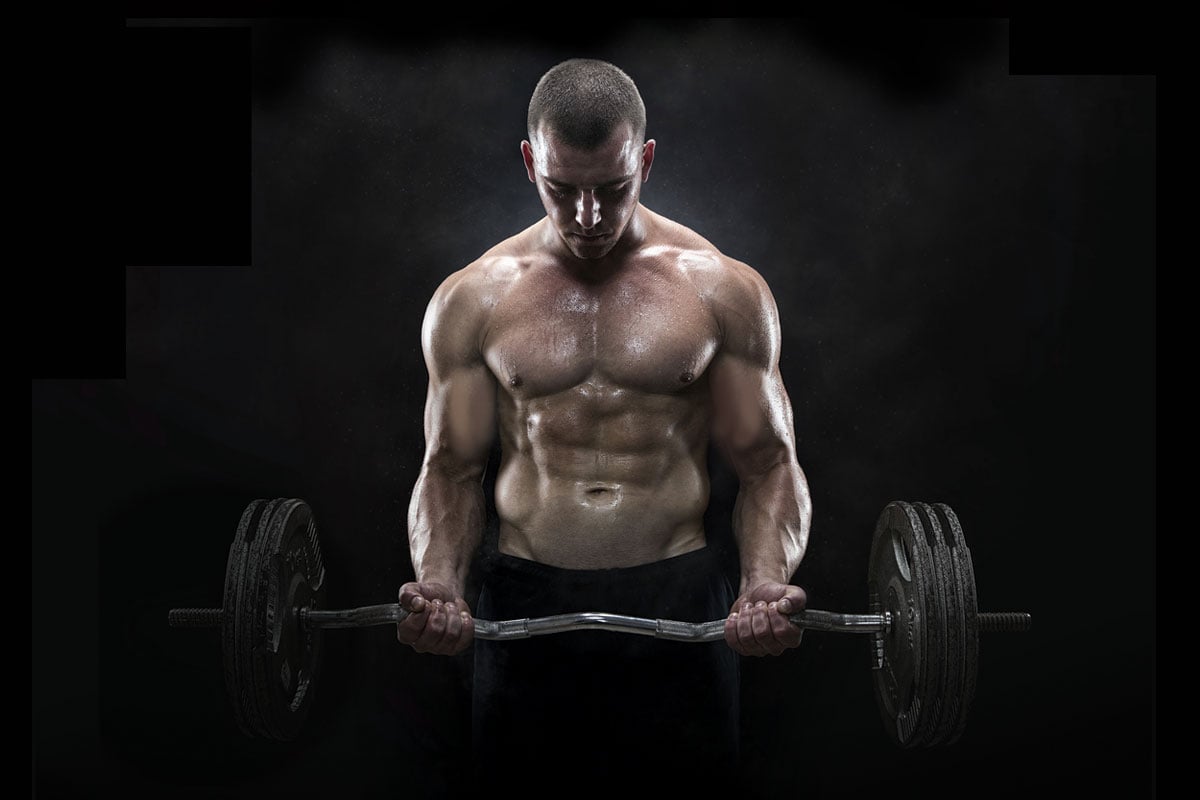Strength endurance training is one of the most underused formats of conditioning and one that can achieve multiple goals at the same time. After all, it's a huge component of the online NASM personal training course.
Want to get the heart rate up and improve endurance? Need to build up lean tissue? Is getting a good sweat going your indicator of a great workout? Strength Endurance is the phase of training that can do it all…at the same time.
Here’s how it works: Once you’ve performed an active warm-up consisting of foam rolling, active stretching and some core activation work, you are ready for the “meat and potatoes” of a strength endurance workout.
This style of workout consists of a superset of similar motions performed with a strength and stability exercise variation executed one right after the other. It is different from the traditional strength superset variation where the exerciser uses two opposing movements (e.g., dumbbell chest press and cable row).
By combining the strength-based exercise with the stability-based variation, the prime movers are taxed first and then the stabilizers of the same area are further targeted with a slow tempo version of the same motion.
Let’s take the motion of pushing as an example. If you’re in the health club and you think pushing, one exercise that comes to mind is the bench press (especially for men on Mondays, known as National Chest Day). The next step is to pair the bench press with a stability-based pushing motion such as a stability ball push-up.
When executed properly, the “push” workout will start off with the bench press for 8 to 12 repetitions, immediately followed by ball push-ups for another 8 to 12 repetitions—but this time done with a slow tempo emphasized on the eccentric or lowering motion. Rest for one minute and repeat the moves two or three more times to complete a total of three to four sets. Here is a sample total-body workout:
Strength Endurance Workout Sample 1
Warm-Up:
Perform 2 sets of 10 reps each.
- Ball Bridge
- Ball Cobra
- Squat Jumps
Resistance Training:
Perform 3 to 4 sets of each superset pair with a 60-second rest.
Push:
- Bench Press x8 reps
- Ball Push-Up x12 reps
Pull:
- Seated Cable Row x8
- Single-Arm Row x12/side
Legs:
- Dumbbell Squats x8
- Single-Leg Squat Touchdown x12/side
The Strength and Endurance Phase
If you follow the National Academy of Sports Medicine (NASM) Optimum Performance Training™ (OPT™) model, this format is Phase 2 of the five phases of training.
With that said, Phase 1 Stabilization Endurance would precede Phase 2 Strength Endurance. By progressing through this initial level you’d have improved muscle balance, postural control, stability and core control, to name just a few of the many benefits of this foundation building phase of training, readying you for Phase 2.
I often refer to Phase 2 training as the “gateway” phase of training. This means that the person who is transitioning from stability training toward increasing muscle size or overall strength can use this phase to become acclimated to the heavier weights and volumes of training for hypertrophy and maximum strength.
It can also work for those who don’t want to let go of the strength-based exercises, but aim to start incorporating stability work into their training without having to go all the way back to Phase 1.
Even though body composition change via fat loss is not emphasized as one of the primary benefits of strength endurance training, the minimal rest in the superset format definitely does help that along. For those who want to get in shape for spring break, lose a couple inches around the midsection, or just avoid going up to the next pant size, this format does an incredible job. It takes going through just one workout to see how this is made possible.
Here is another sample workout using vertical loading. The difference with this one is that you are performing all six movements before resting for 60 seconds and repeating.
“Station-based circuit training is favored by many small group oriented trainers if equipment and space are available. When ‘vertically loading’ or performing all the listed exercises before taking a break, you will have thoroughly challenged strength and stability while also taxing the cardiorespiratory system. See this blog post on circuit training to learn the ins and outs of circuit-based workout routines. ”
Advantage of Vertical Loading: Alternating body parts trained from set to set, starting from the upper extremity and moving to the lower extremity, allows each body part to recover while minimizing the amount of time spent resting.
Strength Endurance Workout Sample 2
Warm-Up:
- Active Hip Flexor Stretch
- Single-Leg Floor Bridge
- Prone Ball Cobra
Resistance Training—Circuit 3 to 4 sets:
- Dumbbell Chest Press x8
- Ball Push-Up, feet on ball x12
- Seated Lat Pull-Down x8
- Single-Leg Cable Row x12/side
- Dumbbell Lunges x8
- Single-Leg Lunge to Balance x10/side
- Rest 60 seconds
No one is exempt from the need for stability training. Whether you are looking to up the ante in your training intensity or mix things up from your weekly regimen of benching and squatting, strength endurance is a great transition.
To get a personal trainer certification, get in touch. And for more information on using this phase of the Optimum Performance Training™ Model, check out the demonstrations below.
Optimum Performance Training™ (OPT™) model
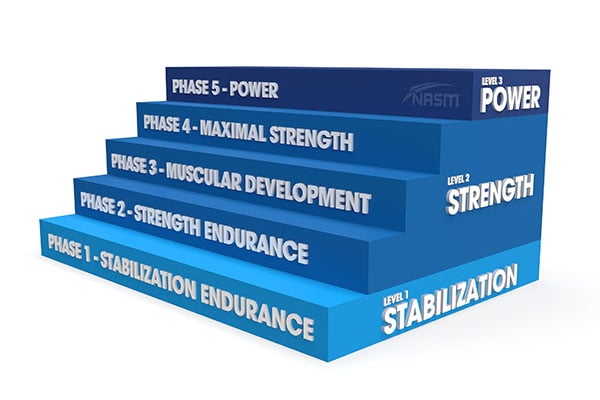
Strength Endurance Workout
Ball Bridge
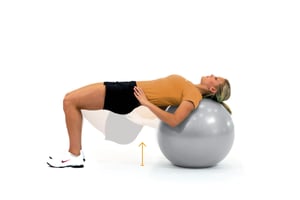
A. Lie on stability ball (ball between shoulder blades) with hands on hips, feet flat and shoulder-width apart, pointing straight ahead. Allow back to curve over the ball.
B. Lift hips until knees are bent at a 90° angle and the body forms a straight line from shoulders to knees. Slowly lower hips toward the floor.
Ball Cobra
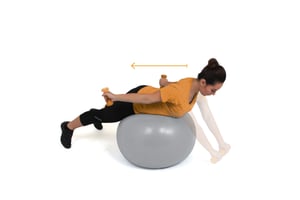 A. Lie on a stability ball with feet pointed toward floor, legs straight. Extend arms in front. Bring arms around to the side of the body by pinching shoulder blades back and down.
A. Lie on a stability ball with feet pointed toward floor, legs straight. Extend arms in front. Bring arms around to the side of the body by pinching shoulder blades back and down.
B. Lift chest off ball, keeping back and neck in proper alignment. Lower chest and return arms to start.
Squat Jump
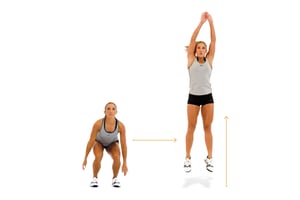 A. Stand with feet shoulder-width apart, pointed straight ahead, knees aligned over mid-foot. Squat slightly as if sitting in a chair.
A. Stand with feet shoulder-width apart, pointed straight ahead, knees aligned over mid-foot. Squat slightly as if sitting in a chair.
B. Jump up, extending arms overhead. Land softly and hold for two seconds, repeat.
Bench Press
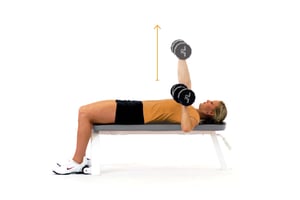 A. Lie on flat bench, knees bent, feet flat and shoulder-width apart with toes pointing straight ahead. Hold one dumbbell in each hand, at chest level, slightly outside of body with elbows flexed.
A. Lie on flat bench, knees bent, feet flat and shoulder-width apart with toes pointing straight ahead. Hold one dumbbell in each hand, at chest level, slightly outside of body with elbows flexed.
B. Press dumbbells straight up and together, hold. Slowly return dumbbells toward body.
Ball Push-Up
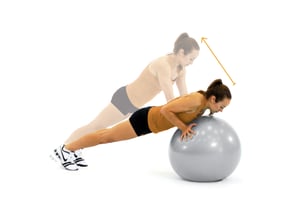 A. Begin in a push-up position with hands on the ball.
A. Begin in a push-up position with hands on the ball.
B. Draw in abdomen and contract glutes. Keeping back flat, slowly lower body by flexing elbows and retracting and depressing shoulder blades. Push back up to start position by extending elbows and contracting chest.
Seated Cable Row
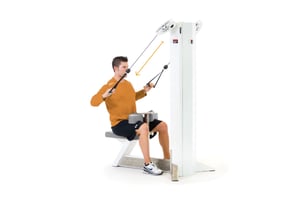 A. Hold cables with arms extended.
A. Hold cables with arms extended.
B. Row cable by flexing elbows and pulling thumbs toward the armpit, keeping shoulder blades retracted and depressed. Do not allow the head to jut forward. Hold. Slowly return to start position.
Single-Arm Row
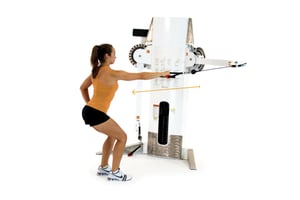 A. Hold cable, with arm extended at chest level, feet shoulder-width apart, pointing straight ahead, knees over second and third toes.
A. Hold cable, with arm extended at chest level, feet shoulder-width apart, pointing straight ahead, knees over second and third toes.
B. With knees slightly flexed, row by flexing elbow. Bring thumb toward the armpit. Do not allow the head to jut forward. Hold. Slowly return arm to original position, switch arms.
Dumbbell Squat
 A. Stand with feet shoulder-width apart, toes pointing straight ahead, knees over second and third toes.
A. Stand with feet shoulder-width apart, toes pointing straight ahead, knees over second and third toes.
B. Slowly begin to squat down, bending knees and flexing hips. Don’t allow any internal rotation at the hips or knees. Return to start by contracting glutes and pressing through the heels as knees extend.
Single-Leg Squat Touchdown
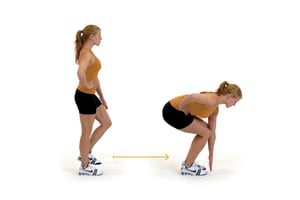 A. Stand on one foot with toes pointing straight ahead, knee slightly flexed and over second and third toes. Keep “floating” leg directly beside body.
A. Stand on one foot with toes pointing straight ahead, knee slightly flexed and over second and third toes. Keep “floating” leg directly beside body.
B. Slowly squat down. Reach with free hand toward stabilizing foot. Push through heel, activate glutes and stand back upright until hip and knee are extended.
If you are interested in another OPT model resource, check out Program Design for Weight Loss!
